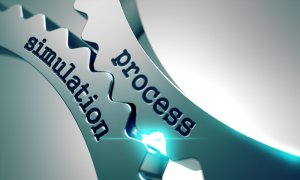Introduction
A trading system can be defined as a specific set of rules that automatically determine what to buy or sell without human intervention. What to buy or sell? Where entry and exit of the market? How many positions will place on the market?
In this educational article, we’ll review the first steps to build a trading system.
Difference Between Trading Systems and Trading Strategy
In general terms, a trading system is a precise set of rules which automatically and without any external kind of human intervention, will place an order into the market, including the entry and exit levels. In consequence, since the trading system does not need any human intervention, the results can be verified objectively.
A trading strategy typically features components such as a money management rule, and a portfolio rule that will define when entry and exit from the market.
The money management rule should not be confused with risk management because risk management considers where to place the stop loss and the profit target level. Conversely, money management answers the “how much” question; it determines the position size on a particular trade entry.
Now, when the developer of a trading system includes a set of rules for portfolio construction, using non-correlated assets, this process corresponds to the portfolio management section of that system, which should target the maximization of its returns relative to the risk incurred.
The First Steps to Build a Trading System
As we commented, a trading system is a set of rules that defines, under certain market conditions, an entry order to buy or sell, which must include predefined stop loss and take profit levels. In this context, an example of pseudo-code of a trading system could be:
- If the price(close) is higher than the price(high) of 10 days, then buy 0.1 lots.
- If the price(close) is lower than the price(low) of 10 days, then sell 0.1 lots.
- Set a stop-order at 1.5*AverageTrueRange(14)
- Set a take-profit at 2.0*AverageTrueRange(14)
Our example is a basic idea for a trading system that will buy when the price surpasses the highest level of 10 previous days, and sell when the price pierces below the lowest level of 10 previous days. In both cases, the position size will be 0.1 lots, assuming that the system developer risks 1% of its trading account. Our model of the trading system proposed will place a stop-loss at 1.5 times the Average True Range (ATR) of 14 days, and the take profit will locate at 2.0 times the ATR of 14 days. This example did not consider a portfolio management rule. Until now, we assume the trader will work on a single market.
Considering that a trading system can be validated objectively using statistical methods, a system developer should consider these five steps to building a trading system:
- Observation of the financial market activity to discover a relationship between a group of variables.
- Hypothesis definition originating from the relationship between variables that causes some effect in the market.
- A Forecast arising from the potential effect of the interaction of the variables under study.
- Verification of the model employing real market data, using statistical methods.
- Conclusion based on the results obtained on the verification process and considering a determined confidence level.
Conclusions
A trading system is a specific set of rules oriented to take market entries, including stop-loss and take profit levels, without human intervention.
The development process of a trading system requires a systematic methodology before placing it to work into the real market. The steps that the developer should have in consideration are as follows:
- Observation.
- Hypothesis.
- Forecast.
- Verification.
- Conclusion.
Suggested Readings
Jaekle, U., Tomasini, E.; Trading Systems: A New Approach to System Development and Portfolio Optimisation; Harriman House Ltd.; 1st Edition (2009).





